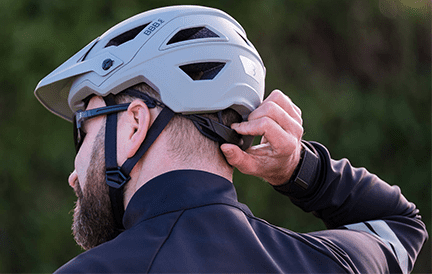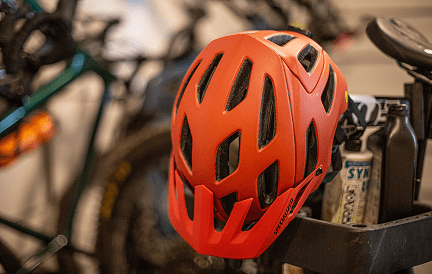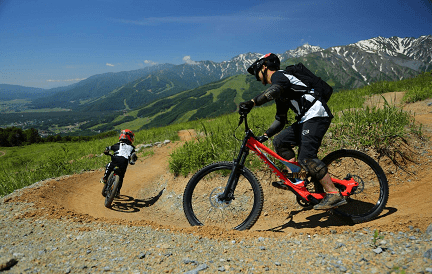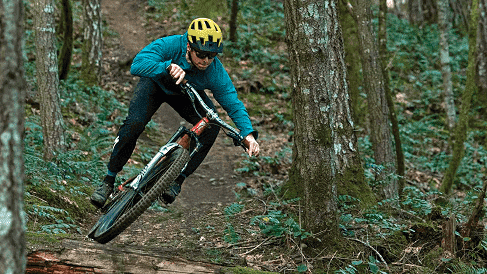Mountain bike riding can be segmentized into three, XC (cross country), Trail, and Downhill. Downhill riding is the most rigorous style which requires proficient technique and extreme precision. Consequently, it is one of the most dangerous riding styles and requires great protection. A full-face helmet is also known as a helm downhill is specifically used for downhill mountain biking. If you are thinking of embarking on a downhill endeavor, you must have a dh helmet. But how to buy one? We explain this below in the following parts.
- Part 1: Why is a Mountain Bike Helmet Important
- Part 2: What to Look for in a Helm Downhill
- Part 3: What are Some Popular Downhill Helmets
- Part 4: Frequently Asked Questions
Part 1: Why is a Mountain Bike Helmet Important
A dh mtb helmet not only protects you from the debris on the trail but gives you adequate protection in cases of a crash or impact, saving you from any sort of injury. Over the years, the helmet industry has evolved for good. Previously, helm downhill were bulky, old-fashioned, and heavy. However, innovation in the industry has allowed manufacturers to produce full-face downhill mountain biking helmets that are easier to carry, more comfortable, and feature better ventilation. Downhill helmets now have modular designs where you can easily remove components such as the chin bar. Resultantly, they have become a more hybrid option that are suitable for other riding styles as well.
The importance of a helmet for this gravity-based sport or any other for that matter is self-evident. Whether it is a long ride down the hill with sharp turns and big jumps or some casual strolls around the trail, having a good lid is mandatory. But what is a good lid and how to choose one?
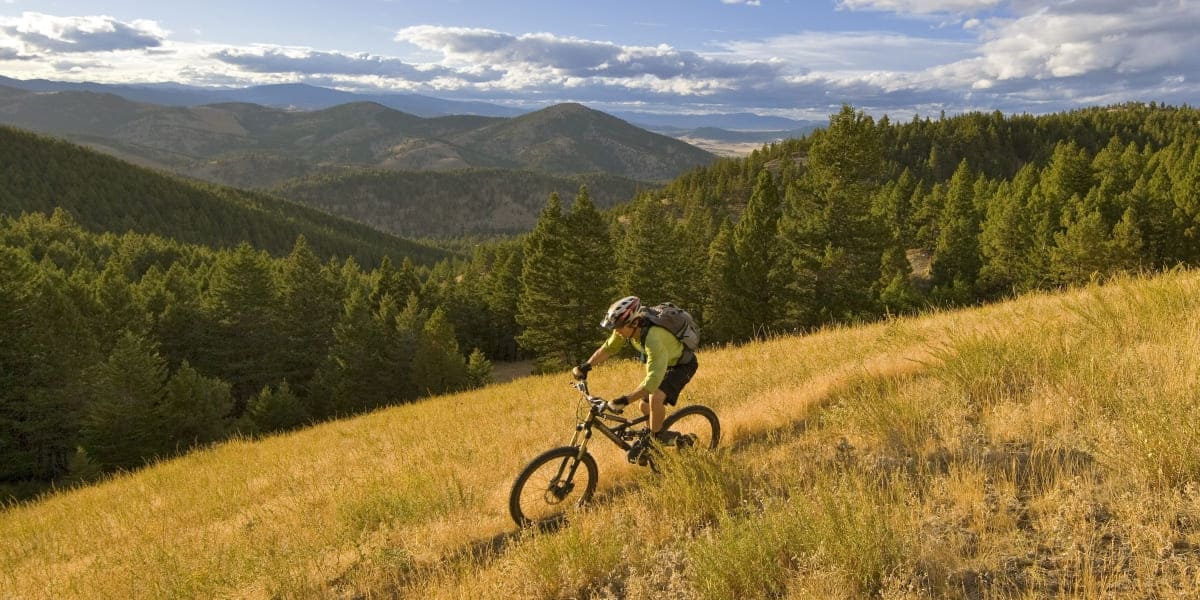
Part 2: What to Look for in a Helm Downhill
The Fit
To begin with, any helmet-be it a helm downhill or a normal riding helmet- should fit properly around your head. While finding a good fit has placed a great emphasis, no one defines what constitutes a good fit. Ideally, a helmet should maintain its position on your head during the ride and under any load/pressure. To make this happen, you need to buy a correctly sized helmet. It should sit right above your eyebrows and should be snug. A tight helmet won’t move down your head and a loose helmet would quiver on top of your head. In any of the situations mentioned before, protection has compromised. A good fit would make sure that the helmet stays in place while providing you with the most coverage for your head.
Although people can argue that each head shape might differ from the other, some of the most common head shapes are round oval, intermediate oval, and long oval. It might be physically impossible for you to determine your head shape or the dimensions of your head. But what you can do is try a whole lot of helmets to understand your type. This can be done by frequently visiting the bike shop near your place or trying the helm downhill of your riding buddies. You can only make an informed purchase when you have an idea of your head shape and the fit that suits you.
Protection rating
Moving on, safety certification should always be something that you consider before buying a downhill mtb bike helmet. Numerous testing institutes can verify safety and crash ratings for your helmet but two important standards that should be maintained are, EN1078 (the European Standard) and ASTM F1952 – 15 (the American Standard). If your helmet features either or both of these safety certifications you are good to go. The aforementioned safety tests and many others involve a series of tests conducted in a controlled environment that help manufacturers to understand the performance of the equipment in a real-world situation.
Bonus Features
Last but not the least, bonus features. Helmet manufacturers use these features as a marketing tool and also to make their helmets distinguishable from others. At times, these features also apply upwards pressure on a consumer for purchase. When you are considering buying a helmet, always have an eye on any bonus features the helmet or its counterpart might have. These features can be additional safety features or convenience features but, in any case, they sure would help you get through the day.
Continue reading and find out some of the best helm mtb downhill that you can buy right off the market. If there are still any confusions you can also see some FAQ’s answered below to achieve more clarity.
Part 3: What are Some Popular Downhill Helmets
Specialized Gambit:
Advertised as “The best full-face helmet with all-day comfort”. It is no surprise that it is the first on the list. Multiple features help Gambit climb the ladder to the first place. First and foremost, its weight. During downhill riding, a heavy helmet can result in great stress on the neck which can ultimately lead to neck injuries. Gambit on the other hand is as lightweight as an open-face helmet, which means wearing it all day won’t be a problem. Specialized has prioritized all-day comfort in its design. Therefore, it also has a great ventilation system that not only ensures breathability but also keeps your head cool.
Even with low weight and extreme ventilation, there is no compromise on protection as the helmet is DH safety certified and also includes a MIPS SL Liner that would protect you from the impact of any rotational force, if encountered during a crash. On top of that, it has a 3-D adjustable cradle that ensures a perfect fit. The only downside to this downhill bicycle helmet is that it has a high price and can be a push for people that might be looking for a helmet while keeping it on a budget.
Dainese Linea 01
If you are someone that is looking for a lightweight helmet for their downhill adventures, Dainese Linea 01 should be your go-to option. Weighing only 570 grams, it is the lightest full-face helmet in the industry. This is also the primary reason for its popularity. The logic behind such a low weight is simple, it uses an embedded nylon exoskeleton which has a lower density when compared to other materials. Yet, there is no compromise on safety whatsoever. Rather the nylon exoskeleton allows for better penetration resistance and shock absorption.
Linea is a comfortable and well-ventilated helmet that can be worn all day every day. It has a DH safety rating and also features a MIPS liner for protection from rotational forces. The interior of the helmet is also designing in a manner to maximize rider comfort. Paddings of various thicknesses are adding to all around the inside of the helmet so that you can experience a good grip from every angle and the helmet stays put. While all of this seems too good to be true, here is a harsh pill to swallow.
Due to such low weight, riders don’t feel confident while wearing the helmet and resultantly there are mixed reviews about its performance. Additionally, there is a creaking noise produced by the liner when it comes in contact with the EPS. This can get irritating at times but is bearable. All in all, for people who don’t want a heavy and bulky helmet, this is the answer to their prayers.
Leatt MTB 4.0 Enduro V21
As mentioned earlier, innovation in the industry and the inclusion of salient features have moved the downhill helmet situation up a notch. This has resulted in better quality helmets with each passing day. It not only ensures safety but are well focused on consumer utility. Leatt MTB 4.0 Enduro V21 is a DH-certified helmet constructed using a modular design. It has a removable chin guard, making it a hybrid option that can be used for all three riding styles.
Additionally, the helmet also has a comfortable internal padding and a moisture-wicking liner. It keeps the helmet fresh even with long hours of riding and heavy sweat. Most helmets out there use MIPS liner as a mechanism for protection from rotational forces but Leatt on the other hand uses its very own and uniquely designed 360-degree turbine inserts that reduce any rotational force generated upon impact. Even though it is a relatively newer technology, it performs equally well when compared to any conventional MIPS liner. Last but not the least, the helmet also has a break-away visor and Fidlock buckles. Thus, wearing it is as easy as it gets. The only downturn for this purchase is that it is expensive. Not only when compared with its other counterpart but also from its full-face variant that does not feature a removable chin.
Giro Switchblade MIPS
No list is complete without a helmet from the Giro lineup. Giro has undeniably developed a great reputation by producing some of the best helmets on the market. They are extremely popular for producing helmets that are not only reliable but also have some of the best features available to riders. Giro Switchblade can be an ideal helmet for riders that are looking for something solid and utilitarian at the same time. Switchblade’s downhill bicycle helmet certification is enough to verify and validate the strength of the helmet. If sufficient security is always a concern for you, things can’t go wrong while wearing a manifest.
Mountain biking has become popular over the years. More and more people are inclining towards the sport and enjoy recording themselves on some of the most dangerous downhill actions. Keeping this in mind, Giro has placed a camera mount on the helmet and the structure facilitates other sorts of recording equipment as well. Apart from this, it has hydrophilic internal padding. It allows for a greater amount of moisture to absorb before reaching its saturation point. To keep the helmet cool from the inside it also has 20 ventilation points. It generates an adequate amount of airflow so that you can ride worry-free even in hot climates.
The above-mentioned are some of the best helm downhill that you can purchase irrespective of the fact that you are a pro or new to the sport. However, you still might have some concerns. So, the following are some of the frequently asked questions. These might not only help you navigate through your purchase but also help you make a more informed decision.
Part4: Frequently Asked Questions
Do Full-face Helmets Get Hot
The cooling ability of a helmet depends on several factors such as the riding environment, ventilation mechanism used, and materials used both inside and outside the helmet. While airflow is not the priority of downhill riders as larger vents allow for debris to come in, it might get warm inside a full-face helmet when riding in hot weather. However, since there is a tradeoff between protection and ventilation, one cannot have the best of both worlds. As a result, riders prefer protection. Since most downhill mountain biking did in cooler areas, ventilation is not a major issue in the first place.
When Should You Replace Your Helmet? Is My Helmet Wasted if I Drop it
Dropping your helmet is not an issue. All of us drop our helmets every once in a while, and this should not be the reason for replacement. But when not handled with care a helmet can quickly become the target of wear and tear. You should be careful with your helmet. Try to take care of it but a simple drop or fall is not something that might lead you to buy a new helmet. Unless there is some notable issue with it after the fall.
Are Stickers and Paint Bad for My Helmet
While there is no clear evidence that suggests that stickers and paint might cause any adverse effects on the helmet, experts often suggest not to do so. This is more like a protective measure taken to preserve the shell of the helmet as it might weaken when exposed to adhesive chemicals or paint.
To sum it all up, a helmet is a vital piece of equipment for your protection. Compromising on it can put you in a difficult situation. Wear a helmet and ride safe!

